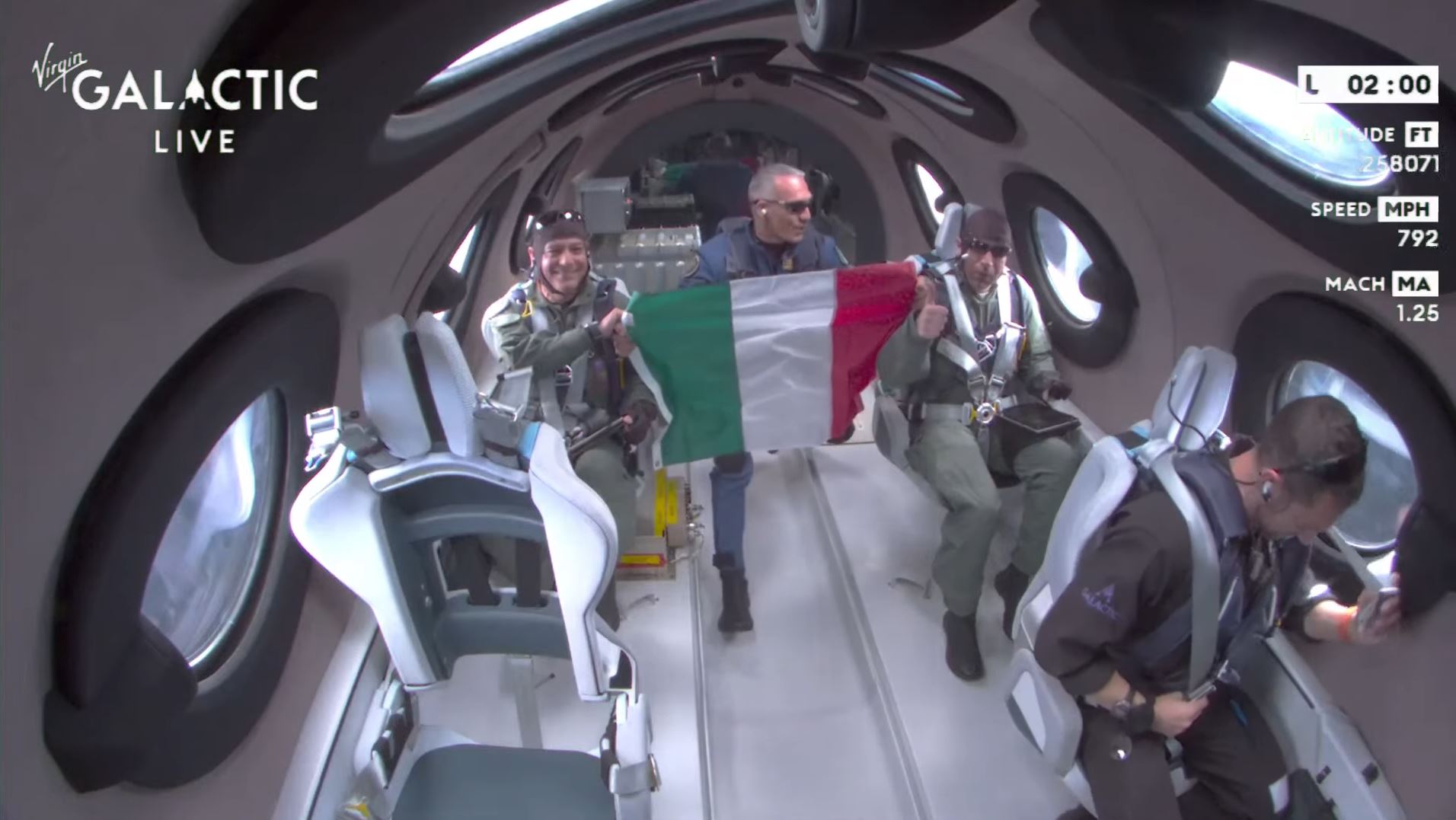Washington, United States — Virgin Galactic successfully flew its first paying customers to the final frontier Thursday, a long-awaited achievement that puts it back on track in the emerging private spaceflight sector.
Italian Air Force officers unfurled their nation’s flag and peered out windows at the Earth’s curvature while enjoying a few minutes of weightlessness at 52 miles (85 kilometers) above sea level.
“Welcome to space, astronauts,” Virgin Galactic’s Sirisha Bandla said in a livestream.
The mission dubbed Galactic 01 began when a giant, twin-fuselage “mothership” aircraft took off from a runway at Spaceport America, New Mexico, around 8:30 am local time (1430 GMT).
The carrier plane gained high altitude, then around 40 minutes later released a rocket-powered plane, called VSS Unity, which soared into space at nearly Mach 3.
Fifty miles is considered the border of space by NASA and the US Air Force, though the internationally recognized boundary, known as the Karman Line, is 62 miles high.
Inside the spaceplane’s cabin were Colonel Walter Villadei and Lieutenant Colonel Angelo Landolfi of the Italian Air Force, Pantaleone Carlucci of the National Research Council of Italy, and Colin Bennett of Virgin Galactic.
There were also two pilots on the spaceplane, and two on the carrier plane.
The stream showed Unity later gliding back safely to Earth.
The flight came almost two years after Virgin Galactic’s founder Richard Branson flew to space in a test flight meant to usher in a new era of lucrative space tourism.
But the company subsequently faced setbacks, including a brief grounding by the Federal Aviation Administration (FAA), which found the Branson flight deviated from its assigned airspace and Virgin Galactic did not communicate the “mishap” as required.
Later, lab testing revealed certain materials used in its vehicles had fallen below required strength margins, necessitating upgrades to the fleet.
The company ended its spaceflight pause with a successful test in May, paving the way for Thursday’s mission. In total, it ran five test flights before Thursday’s commercial flight.
Monthly flights
The Galactic 01 crew were tasked with conducting 13 supervised and autonomous experiments, and collecting data on their suits and sensors in the cabin.
Experiments included measuring radiation levels in the under-studied mesosphere, and how certain liquids and solids mix in microgravity.
Founded in 2004, Virgin Galactic has sold around 800 tickets for seats on future commercial flights — 600 between 2005 and 2014 for $200,000 to $250,000, and 200 since then for $450,000 each.
Movie stars and celebrities were among the first to snap up seats, but the company’s program suffered a disaster in 2014 when a spaceplane on a test flight broke apart midair, killing the copilot and seriously injuring the pilot.
The company is now looking to the future. The next mission, Galactic 02, is set for August, and then it hopes to make monthly space hops after that.
Branson, Bezos and Musk
Virgin Galactic competes in the “suborbital” space tourism sector with billionaire Jeff Bezos’s company, Blue Origin, which has already sent 32 people into space using a vertical lift-off rocket.
But since an accident in September 2022 during an unmanned flight, Blue Origin’s rocket has been grounded. The company promised in March to resume spaceflight soon.
Elon Musk’s SpaceX meanwhile has collaborated with partner companies to send paying customers higher up, into Earth orbit or to the International Space Station.
But chartering a SpaceX rocket is a much more costly affair. Tickets for the ISS in joint SpaceX-Axiom Space missions are reported to run into tens of millions of dollars.

